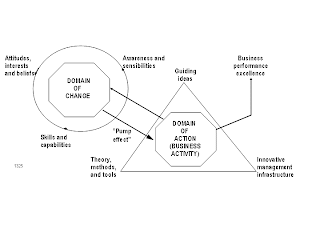Principles of Business Communication
Businesscommunicationnew7c’s of Business Communication
What are the principles, those must be followed in business communication.
Like other discipline business communication has certain scientific principles. These principles are important and relevant to all media but they are most important to written communication. The principles of business communication are as follows:
1. Clarity 2. Completeness
3. Conciseness
4. Consideration
5. Courtesy
6. Correctness
7. Concreteness
Fig-2 : Principles of business communication (7 c’ s of Business Communication )
[Source : (Data) : Herta A. Murphy et al]
Clarity:
a. Clarity of thought :
The sender must have clear idea about following three points in his mind –
i. What is the objective of communication
ii. What is to be communicated?
iii. Which media will be the most suitable for this purpose?
b. Clarity of expression :
The sender should be careful about the following points, otherwise message may be misinterpreted in receiver’s mind.
i. Use simple words instead of heavy words-
Do not use Use
Visualise See Utilise Use
ii. Use single words instead of long phrases-
Do not use Use
At all times Always
At the present time Now
iii. Use verbs in place of nouns-
Do not use Use
Come to a conclusion Conclude
Make a decision Decide
iv. Avoid double entry-
Do not use Use
Actual fact fact
11 a.m. in the morning 11 a. m
v. Use concrete expressions instead of vague and general statement-
Do not use Use
Goods are soon being dispatched Goods will be dispatched on 2nd july
vi. Prefer active constructions instead of passive constructions-
Do not use Use
Your report will be discussed by A committee will discuss your
A committee Report
vii. Avoid use of the infinitive (to-verb-to give, to learn etc.)
Do not use Use
It is my fob to supervise I Supervise
viii. Avoid Jargon (i. e, special language of trade, profession or field of study)
Do not use Use
Ultimo (the previous month ) Write the month
Proximo (next month) Write the name of the month
ix. Avoid ambiguity (i. e, the message contains more than one meaning)
x. Use short sentences instead of long sentences.
Completeness:
Completeness of facts is essential in business communication. Message should organize in such a way that the receiver has no doubts about anything contained in it. Sender should keep following points in his mind to make a message complete:
a. He should answered all the questions while answering a letter, and
b. Check for ‘5 W’ questions- who, what, where, when and why. (K. pal & Korlahalli, 2002) for example, while announcing a meeting, specify
i. When the meetin is to be held?
ii. Where it is to be held?
iii. Why it is to be held?
iv. What is to be discussed in the meeting?
v. Who is to attend the meeting?
Conciseness:
To win reader’s attention, length of message should be reasonable. Length of message may be short or long on the basis of describing necessary fact. The following rules help to achieve conciseness:
i. In clued only relevant fact.
ii. Avoid reparation.
iii. Avoid wordy expressions.
iv. Organize the message well. (R. Pal etal, 2002)
Consideration: In a message consideration must show to the reader in the following ways:
a. Adopt you view instead of I and we view.
b. Avoid gender bias in the followings ways:
I. Use gender bias free words-
Do not use Use
Chairman Chairperson,
Policemen Police
ii. Use a slash (/) to include both alternatives:
Use
Dear sir/ Madam,
Gentlemen / Ladies
c. Use positive words instead of negative words for approaching.
Courtesy:
Courtesy demands a considerate and friendly behavior towards others. The following principles help to promote courtesy:
i. Answer the letters promptly.
ii. Omit irritating expressions.
iii. Apologise sincerely for an omission.
iv. Thank generously for any favor
Correctness:
The following rules help to achieve correctness in the message.
i. Transmit correct facts in correct language.
ii. Message must be transmitted and responded at appropriate time.
iii. Message shoud be sent in correct style after considering readers:
Educational background, vocabulary, specialized knowledge, psychological make-up, relationship with the organization etc.
Concreteness:
The following guidelines help to ensure concreteness in the message:
i. Use specific facts and figures.
ii. Put action in the verbs.
iii. Use vivid and image building words. [H. A. Murphy, et al : 2000]
 06:18
06:18
 Ornov Chowdhury Bappi
Ornov Chowdhury Bappi



 Posted in:
Posted in: 
























0 comments:
Post a Comment